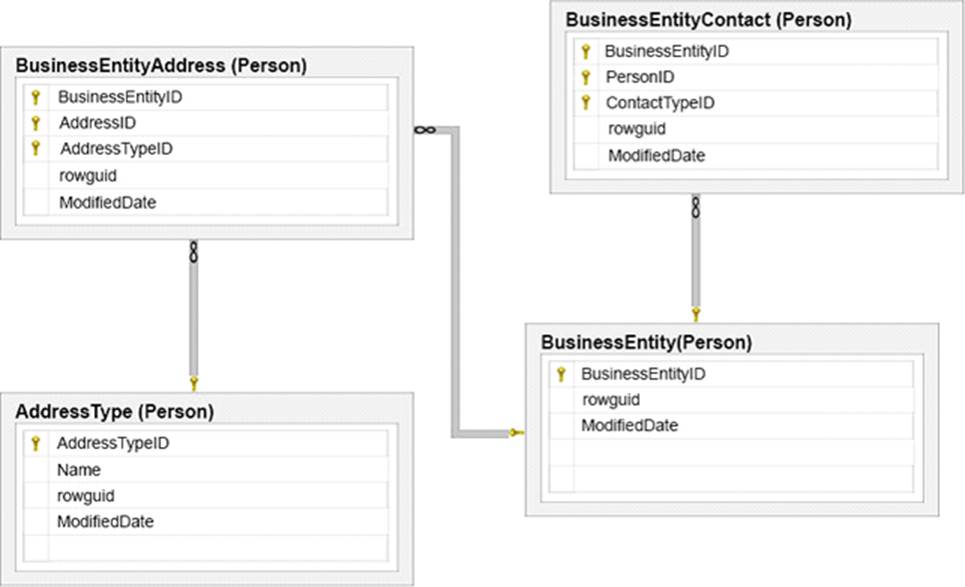Microsoft 70-762 Developing SQL Databases Online Training
Microsoft 70-762 Online Training
The questions for 70-762 were last updated at Jan 04,2026.
- Exam Code: 70-762
- Exam Name: Developing SQL Databases
- Certification Provider: Microsoft
- Latest update: Jan 04,2026
Note: this question is part of a series of questions that use the same or similar answer choices. An answer choice may be correct for more than one question in the series. Each question is independent of the other questions in the series. Information and details provided in a question apply only to that question.
You are developing and application to track customer sales.
You need to create an object that meet the following requirements:
– Run managed code packaged in an assembly that was created in the Microsoft.NET Framework and uploaded in Microsoft SQL Server.
– Run written a transaction and roll back if a future occurs.
– Run when a table is created or modified.
What should you create?
- A . extended procedure
- B . CLR procedure
- C . user-defined procedure
- D . DML trigger
- E . scalar-valued function
- F . table-valued function
You have a view that includes an aggregate.
You must be able to change the values of columns in the view. The changes must be reflected in the tables that the view uses. You need to ensure that you can update the view.
What should you create?
- A . table-valued function
- B . a schema-bound view
- C . a partitioned view
- D . a DML trigger
DRAG DROP
You are creating a stored procedure which will insert data into the table shown in the Database schema exhibit. (Click the exhibit button.)

You need to insert a new customer record into the tables as a single unit of work.
Which five Transact-SQL segments should you use to develop the solution? To answer, move the appropriate Transact-SQL segments to the answer area and arrange the, in the correct order.
NOTE: More than one order of answer choices is correct. You will receive credit for any of the correct orders you select.

Note: This question is part of a series of questions that use the same or similar answer choices. An Answer choice may be correct for more than one question in the series. Each question independent of the other questions in this series. Information and details provided in a question apply only to that question.
You are a database developer for a company. The company has a server that has multiple physical disks. The disks are not part of a RAID array. The server hosts three Microsoft SQL Server instances. There are many SQL jobs that run during off-peak hours. You must monitor and optimize the SQL Server to maximize throughput, response time, and overall SQL performance. You need to identify previous situations where a modification has prevented queries from selecting data in tables.
What should you do?
- A . Create a sys.dm_os_waiting_tasks query.
- B . Create a sys.dm_exec_sessions query.
- C . Create a Performance Monitor Data Collector Set.
- D . Create a sys.dm_os_memory_objects query.
- E . Create a sp_configure ‘max server memory’ query.
- F . Create a SQL Profiler trace.
- G . Create a sys.dm_os_wait_stats query.
- H . Create an Extended Event.
Note: This question is part of a series of questions that use the same or similar answer choices. AnAnswer choice may be correct for more than one question in the series. Each question independent of the other questions in this series. Information and details provided in a question apply only to that question.
You are a database developer for a company. The company has a server that has multiple physical disks. The disks are not part of a RAID array. The server hosts three Microsoft SQL Server instances. There are many SQL jobs that run during off-peak hours.
You observe that many deadlocks appear to be happening during specific times of the day.
You need to monitor the SQL environment and capture the information about the processes that are causing the deadlocks. Captured information must be viewable as the queries are running.
What should you do?
- A . A. Create a sys.dm_os_waiting_tasks query.
- B . Create a sys.dm_exec_sessions query.
- C . Create a PerformanceMonitor Data Collector Set.
- D . Create a sys.dm_os_memory_objects query.
- E . Create a sp_configure ‘max server memory’ query.
- F . Create a SQL Profiler trace.
- G . Create a sys.dm_os_wait_stats query.
- H . Create an Extended Event.
Note: This question is part of a series of questions that use the same or similar answer choices. An Answer choice may be correct for more than one question in the series. Each question independent of the other questions in this series. Information and details provided in a question apply only to that question.
You are a database developer for a company. The company has a server that has multiple physical disks. The disks are not part of a RAID array. The server hosts three Microsoft SQL Server instances. There are many SQL jobs that run during off-peak hours.
You must monitor the SQL Server instances in real time and optimize the server to maximize throughput, response time, and overall SQL performance.
What should you do?
- A . A. Create asys.dm_os_waiting_tasks query.
- B . Create a sys.dm_exec_sessions query.
- C . Create a Performance Monitor Data Collector Set.
- D . Create a sys.dm_os_memory_objects query.
- E . Create a sp_configure ‘max server memory’ query.
- F . Create a SQL Profiler trace.
- G . Create a sys.dm_os_wait_stats query.
- H . Create an Extended Event.
Latest 70-762 Dumps Valid Version with 157 Q&As
Latest And Valid Q&A | Instant Download | Once Fail, Full Refund


